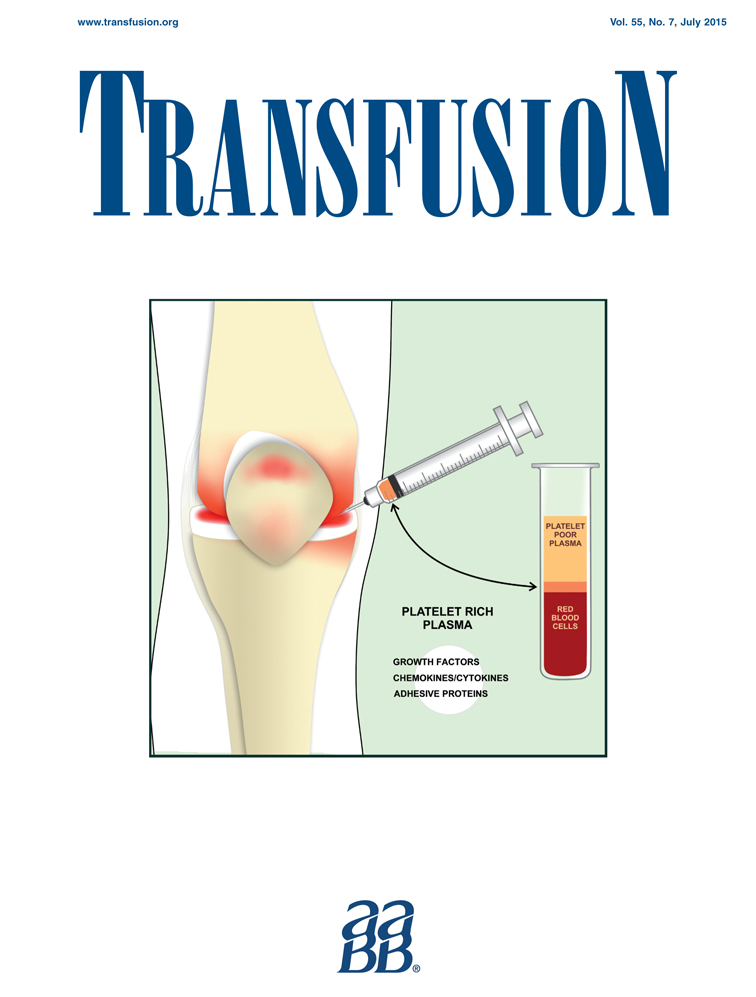In vitro variables of buffy coat–derived platelet concentrates with residual plasma of down to 10% are stably maintained in new-generation platelet additive solutions
Abstract
BACKGROUND
Platelet additive solutions (PASs) facilitate plasma recovery and may reduce the risk of plasma-associated adverse transfusion reactions. Whereas current apheresis techniques are able to produce platelet concentrates (PCs) with reduced residual plasma volumes, it is still technically challenging to prepare PCs with plasma levels less than 20% from whole blood. This study aimed to evaluate the feasibility of producing buffy coat (BC)-derived platelets (PLTs) with as little as 10% residual plasma and to test the ability of PASs to preserve PLT quality under these conditions.
STUDY DESIGN AND METHODS
A pool-and-split design was used to evaluate the in vitro quality of semiautomatically prepared BC-derived PCs stored for 7 days in either SSP+ (PAS-IIIM) or Intersol-G (glucose-containing PAS) with 10% to 30% residual plasma in three phases: 1) 30% plasma (SSP+, Intersol-G), 2) 20 and 15% plasma (SSP+, Intersol-G), and 3) 10% plasma (Intersol-G).
RESULTS
The different plasma-reduced PAS-PC types were comparable in volume, PLT concentration, and PLT yield and met all regulatory requirements. The in vitro quality variables of PLTs suspended in 20% or less residual plasma were comparable to those of PLTs stored in 30% plasma for both PAS types. PLT activation was slightly higher with SSP+ than with Intersol-G. The quality of PCs suspended in Intersol-G with 10% plasma was well maintained during storage.
CONCLUSIONS
Preparation of BC-derived PCs with minimal plasma concentrations as low as 10% is feasible. Late-generation PASs satisfactorily preserve the in vitro quality of such PCs during storage.




